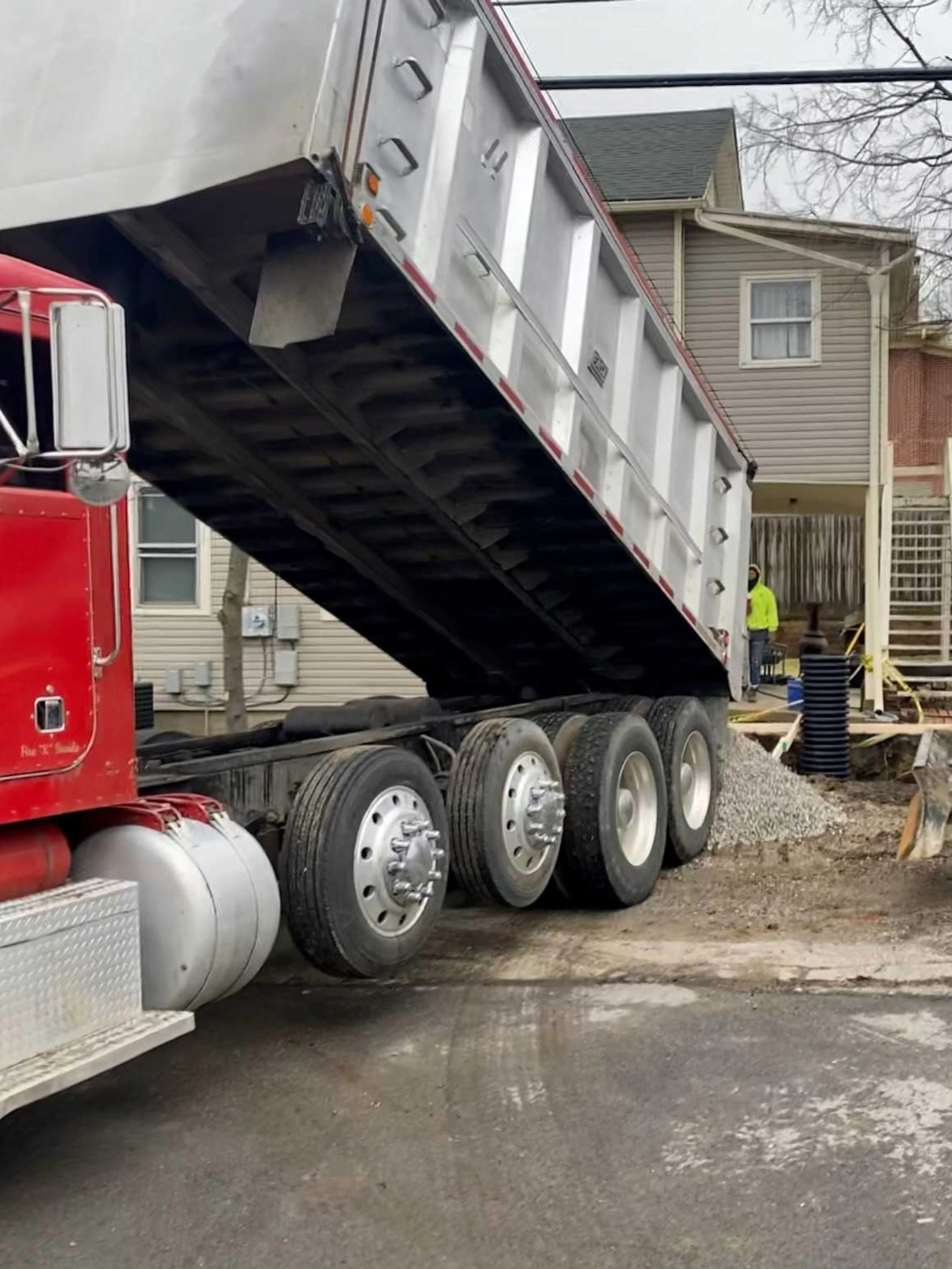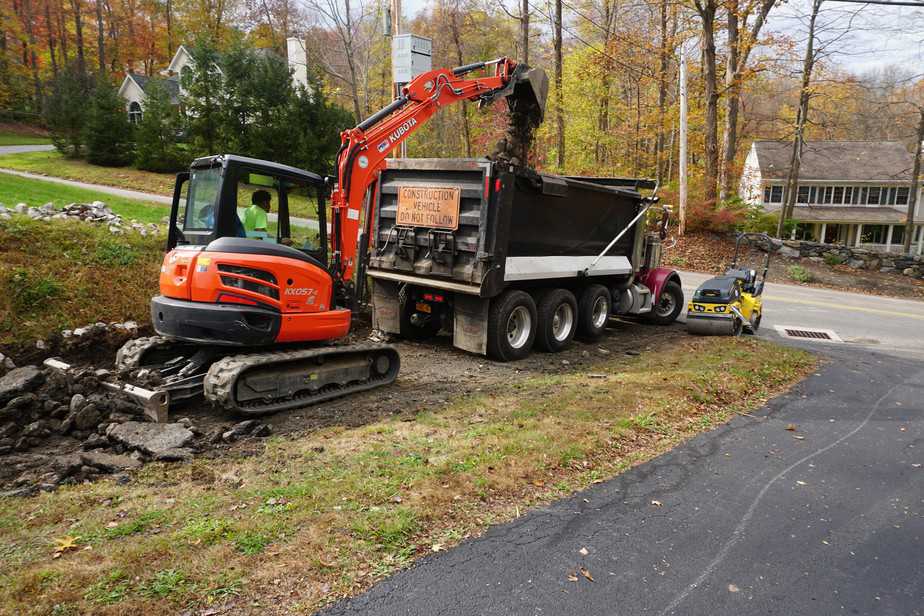Professional Septic Ohio - Relied On Septic Tank Specialists in Ohio
Professional Septic Ohio - Relied On Septic Tank Specialists in Ohio
Blog Article
Introducing the Art of Excavation: Pro Tips for Safe and Efficient Digging
In the realm of excavation, the proficiency of productive and secure excavating is an art type that needs precision, knowledge, and adherence to well established methods. As soil is transformed and planet is relocated, the ins and outs of excavation disclose themselves, requiring a keen understanding of devices, soil composition, safety and security methods, and ecological factors to consider. The knowledge needed to navigate these elements successfully can suggest the distinction in between an effective excavation job and a prospective catastrophe. By deciphering the layers of this complex process, a globe of understandings and techniques awaits those seeking to raise their excavation skills to new elevations.
Importance of Appropriate Equipment
To ensure the safety and effectiveness of any type of excavation job, making use of the suitable devices is paramount. Excavation jobs vary in scope and complexity, ranging from small residential landscaping jobs to large-scale building endeavors.
These flexible machines come in numerous dimensions to fit various project requirements. Miniature excavators are perfect for smaller sized tasks, while bigger excavators deal with more considerable projects successfully.
Aside from excavators, other essential devices includes dump plates, vehicles, and excavators. Discard vehicles are necessary for getting rid of and delivering excavated products, while plates are used for digging deep and narrow trenches. Excavators stand out in tasks that call for pushing large amounts of dirt or particles. By buying the proper devices, excavation tasks can be finished securely, on schedule, and with precision.
Comprehending Dirt Make-up
A detailed grasp of soil make-up is fundamental for carrying out excavation projects with accuracy and security. Understanding the different types of soil is crucial as it straight influences excavation approaches, devices option, and total project efficiency. Dirt composition generally contains 4 primary components: sand, silt, clay, and organic matter. Each part has distinct residential or commercial properties that influence how soil responds to excavation procedures.
Silt bits are smaller sized than sand however larger than clay, using moderate drainage and cohesion. Organic matter, such as decaying plant product, impacts soil fertility and security.
Before starting excavation, conducting dirt tests to establish its make-up and qualities is important. This details helps in choosing the appropriate devices, applying safety and security actions, and developing excavation techniques tailored to the certain dirt problems - lancaster excavation. By understanding dirt make-up, excavation experts can improve project results while making certain safety and security and adherence to ideal techniques
Precaution and Protocols
Understanding soil structure is the cornerstone upon which safety and security procedures and procedures for excavation jobs are constructed, making certain the health of employees and the success of the undertaking. When it involves security during excavation, there are several crucial measures that should be executed to mitigate threats and stop mishaps.
Primarily, prior to any type of excavating commences, a complete inspection of the website should be conducted to recognize any type of prospective dangers such as below ground energies, unsteady dirt problems, or close-by structures that could present a threat. It is important to have an experienced person look after the excavation procedure to ensure that all security methods are complied with purely.
Furthermore, all employees included in the excavation has to be effectively educated in safe digging methods and the correct operation of equipment. By sticking to these security actions and methods, excavation jobs can be finished efficiently and without incident.
Reliable Excavation Preparation
When beginning on an excavation job, precise planning is vital to make sure effectiveness, safety and security, and effective outcomes. Reliable excavation planning includes several key steps that are important for the smooth implementation of the task.
When the site analysis is full, the next step is to create a clear timeline and schedule for the excavation tasks. This includes establishing the series of jobs, tools needs, and workforce allocation. Appropriate scheduling aids prevent delays and ensures that the job remains on track.

Furthermore, communication amongst all group members is vital during the planning phase. Clear directives, routine updates, and reliable sychronisation are vital for a successful excavation task. By spending time and effort in careful planning, excavation teams can considerably boost performance, reduce risks, and achieve effective results.

Managing Environmental Considerations
With raising emphasis on environmental sustainability in building and construction techniques, managing ecological considerations has actually ended up being a vital aspect of excavation tasks. Excavation tasks have the prospective to impact the surrounding environment through dirt disintegration, debris drainage, habitat disturbance, and contamination of water resources. To mitigate these dangers, it is necessary to carry out best techniques that focus on ecological protection.

Additionally, correct waste management is critical to avoid dirt and water contamination. Applying procedures for the disposal of dangerous materials, recycling of waste products, and minimizing using harmful chemicals can dramatically decrease the ecological effect of excavation projects. By integrating these practices right into excavation planning and implementation, building companies can make certain that their projects are not only secure and efficient yet also environmentally liable.
Final Thought
To conclude, mastering the art of excavation calls for a thorough understanding of appropriate devices, dirt structure, safety and security procedures, and reliable planning. By complying with these standards and considering environmental elements, excavations can be performed safely and successfully. It is crucial to focus on safety and security and productivity in every excavating project to guarantee effective end results.
As dirt is transformed and earth is moved, the intricacies of excavation expose themselves, requiring an eager understanding of devices, dirt structure, safety procedures, and ecological factors to consider.To make sure the safety and security and effectiveness of any kind of excavation project, making use of the ideal devices is vital.A detailed grasp of dirt make-up is essential for performing excavation tasks with accuracy and safety. Comprehending the various kinds of dirt is essential as it straight impacts excavation methods, devices selection, and general project performance. By comprehending dirt structure, excavation experts can enhance job outcomes while making sure security and adherence to finest techniques.
Report this page